Nacho chips, nectarines, and noodles – oh my! I bet the delectable potential of foods that start with “N” has crossed your mind before.
I like nothing more than trying new dishes and ingredients. So when I learned about all the “N” cuisine options, I had to dive right in.
“Foods that start with N” include meals, snacks, processed foods, desserts, drinks, fruits and veggies. You won’t find any brand names here, except for Nutella (let’s agree it’s a special case).
Whether you’re a fussy eater or a gastronomic explorer like myself, you’ll find something to your liking in this list of foods beginning with the letter N.
Jump to:
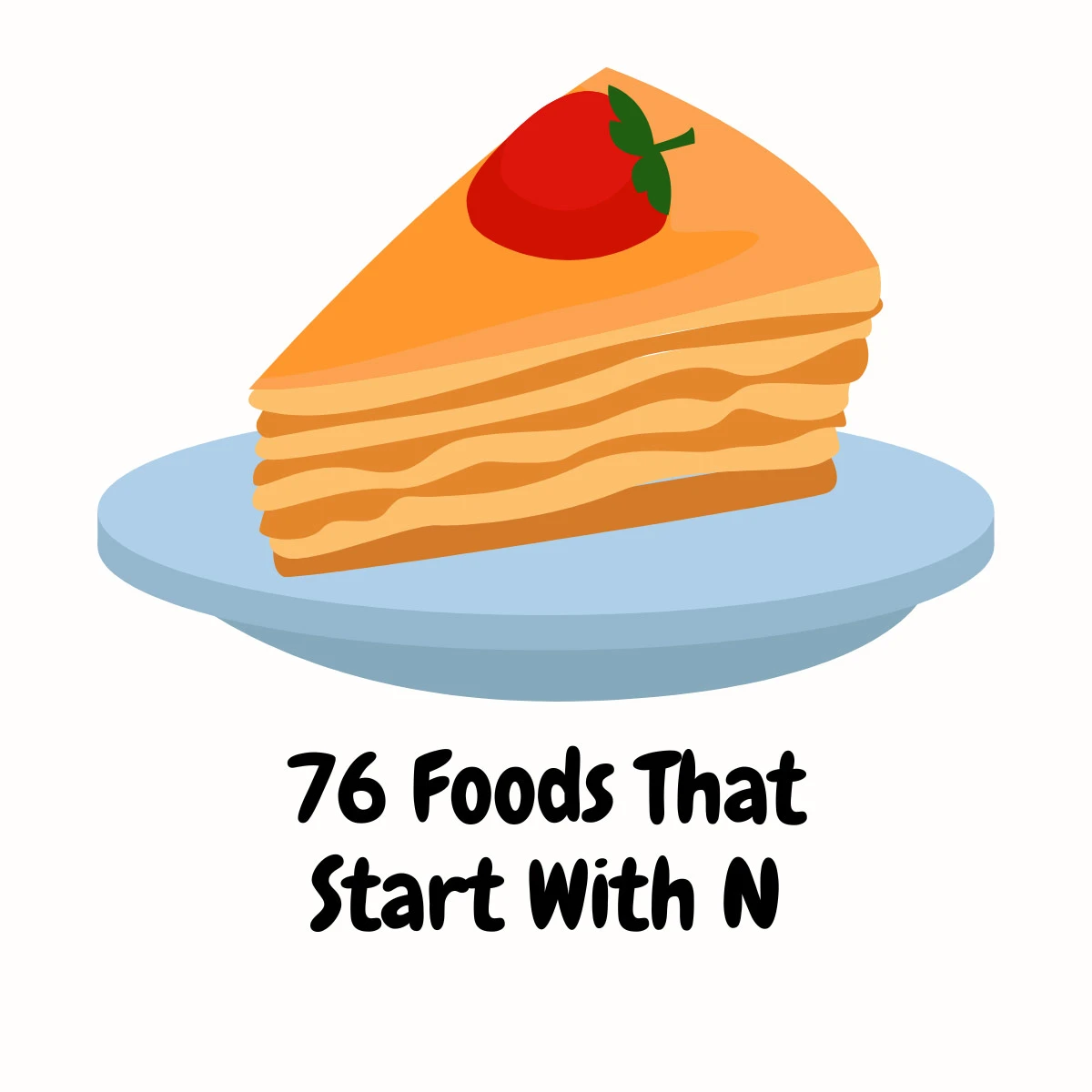
Dishes and snacks that start with N
Naan bread
India, Pakistan, and Afghanistan are the birthplaces of naan bread. It’s prepared in a tandoor oven or griddle using wheat flour, yeast, salt, and water.
Indian and Pakistani curries, stews, and other meals are scooped up with naan bread. It can also make a great pizza crust or sandwich wrap.
Garlic, cheese, and stuffed naan (filled with potato, onion, or paneer cheese) are some naan bread variations.
Nachos
Nachos are a popular Mexican dish made with crunchy tortilla chips, melted cheese, jalapenos, tomatoes, onions, olives, salsa, guacamole, sour cream, and seasoned shredded beef or chicken.
In 1943, Piedras Negras, Mexico restaurant chef Ignacio “Nacho” Anaya developed nachos. He layered tortilla chips with melted cheese and jalapenos when asked to make a snack with what he had.
Nachos are a popular snack worldwide, with several vegetarian and vegan varieties. They are served with cool beer or margaritas as an appetizer, main meal, or snack.
Nargesi

Nargesi is a Persian spinach-egg dish. Sautéed onions, garlic, and spinach are combined with softly beaten eggs.
Nargesi is healthy and tasty. Vitamin- and mineral-rich spinach has anti-inflammatory properties while eggs provide a lot of protein, vitamins, and minerals.
Nasi goreng
Indonesian nasi goreng is stir-fried rice with sweet soy sauce, shrimp paste, shallots, garlic, tamarind, and chili peppers. Egg, chicken, shrimp, vegetables (carrots, peas, and green beans), and crispy fried shallots are common components.
Indonesians and other Southeast Asians love nasi goreng for breakfast or a quick dinner. In Indonesia, it is often served with krupuk or sambal.
“Nasi goreng” means “fried rice” in English, and the meal is similar to others throughout Asia. However, nasi goreng’s unique components and tastes make it so delightful and popular.
Natto

Japanese natto is fermented soybeans. After boiling, Bacillus subtilis natto bacteria ferment the soybeans, giving them a stringy, sticky texture and intense taste.
Japanese breakfasts and snacks have included natto for millennia. It can be eaten with soy sauce, mustard, or other condiments atop steamed rice.
Its powerful, spicy taste and texture can take some getting accustomed to. But its protein, fiber, and vitamin K2 make it a healthy meal growing in popularity beyond Japan.
Noodles
Unleavened dough produced from wheat flour, water, and eggs makes noodles. The dough is rolled out, sliced into thin strips, then boiled, fried, or steamed.
Spaghetti, ramen, udon, and soba are popular noodles. Busy families and individuals like them because they are flexible and easy to make. They’re also filling and cheap.
Nuggets
Nuggets are breaded, fried, or baked meat, fish, or vegetable bites. Chicken nuggets are a very popular and beloved fast food.
Nuggets are an easy-to-eat snack or meal. Many healthy nuggets are baked instead of fried and include whole grains or veggies in the coating.
Processed foods that start with N
Non-dairy creamer
Non-dairy creamer replaces milk in coffee, tea, and other drinks. It is produced using vegetable oils, sugar, and other additions to taste, feel, and look like dairy cream.
Lactose intolerant, vegan, and non-dairy eaters love this product. It adds a creamy, sweet flavor to hot or cold beverages.
Some individuals prefer non-dairy creamer to dairy cream but be aware of its contents and nutritional value. Choose non-dairy creamers that fit your diet because some are heavy in sugar, calories, and chemical ingredients.
Noodle soup mix

Noodle soup mix is pre-packaged noodles and soup spice for quick soup preparation. Dried noodles and spice packets are usually included in the mix.
The soup is a quick and tasty meal that can be made on the stovetop or in the microwave. But be aware that some types are rich in salt or include artificial flavors and preservatives.
Nut butter
Roasting and grinding nuts into a smooth or chunky mixture makes nut butter. To increase taste or texture, some nut butters use salt, sugar, or oil.
Nut butter is used as a spread on toast or sandwiches, a dip for fruits and vegetables, and a component in baking.
Protein, healthy fats, and other nutrients make it a nutritious and tasty supplement to a balanced diet. Nut butter is heavy in calories and fat, thus portion size is key.
Nutri-grain bars
Nutri-grain bars include a cereal-based shell and a soft, chewy center. The filling and crust are created from wheat, oats, and rice and flavored with fruit or other natural components.
Nutri-grain bars can be a quick and healthy breakfast or snack, but check the contents. Some bars include more sugar and calories than other breakfast alternatives and less fiber and protein.
Always read nutrition labels and pick goods that fit your diet!
Nutritional yeast
Nutritional yeast is deactivated yeast used in food and supplements. Its savory, nutty, and somewhat cheesy taste comes in flakes or powder.
Due to its comparable taste, nutritional yeast is used as a vegan and vegetarian cheese alternative. It is high in protein, fiber, vitamins (particularly vitamin B12), and minerals.
It’s worth mentioning that nutritional yeast adds taste and nutrients, not leavening, unlike brewer’s yeast and baker’s yeast.
Nutella

The 1940s Italian invention Nutella is a sweetened hazelnut chocolate spread. Roasted hazelnuts, cocoa powder, sugar, and vegetable oil make it creamy, nutty, and chocolaty.
Nutella has spawned countless imitators and spin-offs worldwide. Its popularity is based on its taste, versatility, and convenience.
Nutella can be spread on toast, crackers, pancakes, waffles, or ice cream. Cakes, cookies, and brownies also often include this product.
Hazelnuts and cocoa powder provide it some nutrition despite its high sugar and calorie content.
Sweets beginning with N
Nankhatai
Flour, sugar, ghee (clarified butter), and spices like cardamom and nutmeg are used to make Nankhatai, an Indian shortbread cookie. The cookies are flavored with saffron, rosewater, almonds or dried fruits.
Indians love nankhatai biscuits with tea or coffee. They’re buttery, sweet and spicy.
Nankhatai can be made gluten-free by using chickpea flour (chickpea flour alternatives here!) or chocolate-flavored by adding cocoa powder.
Napoleon cake

Napoleon cake, commonly known as mille-feuille, is a French dessert with layers of flaky puff pastry and pastry cream. “Mille-feuille” means “thousand sheets” in French, referring to the pastry’s layers.
Napoleaon cake is light and creamy and sometimes flavored with vanilla or chocolate. Its exterior is often covered with a glaze of melted chocolate and sprinkled with nuts or sugar.
Neapolitan ice cream
Neapolitan ice cream is stacked with three flavors. Chocolate, vanilla, and strawberry are usually the flavors, but some specialty shops also offer more creative combinations.
Neapolitan ice cream is a favorite dessert at children’s parties and other events. Its origins are unknown, although it is called after Naples, Italy.
Nesselrode pie
Nesselrode pie is a traditional 19th-century European dish. It’s named after a 19th-century Russian German diplomat, Count Karl Nesselrode.
The pie’s taste and texture come from the filling’s chestnut purée. Peeled and roasted chestnuts are simmered with sugar and water until soft, then blended into a smooth purée.
Nesselrode pie can be eaten at room temperature or chilled, and it goes well with whipped topping, chopped almonds, or candied fruit.
New York Cheesecake
The cheesecake made in the Big Apple is simply known as “New York Cheesecake.” Cream cheese, eggs, sugar, and graham cracker crust are typical ingredients.
This springform pan dessert is decadent and smooth. You can dress it up with whipped cream, syrup, or fruit.
New York cheesecake is famous all over the world for its luscious flavor.
Nougat

Sugar or honey, roasted nuts (such as almonds, pistachios, or hazelnuts), and beaten egg whites make nougat. It’s popular in Italy, Spain, France, and the Middle East and comes in a range of textures, from chewy to crispy.
Nougat can be eaten as a snack or added to ice cream, cakes, and pastries.
Nougatine
Nougatine is almond-caramel candy. After being deep-fried until hard and brittle, the mixture can be broken into pieces and served as a snack or sprinkled on a sweet treat.
Nougatine can be made with any nut or nut butter of your choosing and flavored with your choice of sweetener and spice. It’s a popular topping for desserts including ice cream, pastries, tarts, and candy bars.
Nougat is similar to nougatine but chewier.
Nut brittle
Nut brittle is a sweet created with sugar, syrup, butter, and nuts that are caramelized and stiffened. Nut brittle typically uses peanuts, although almonds, cashews, and pecans can also be used.
Check out my list of cashew substitutes if you need more ideas on what to use instead!
Nut brittle can be broken into small pieces and eaten as a sweet and crunchy snack after cooling. It can also top ice cream, cakes, and cupcakes.
Drinks beginning with N
Naranjada
Spanish and Latin American citrus drink naranjada is created with fresh orange juice, water, and sugar and served cold or over ice.
Naranjada is a summertime thirst-quencher. It can be prepared using lemons, limes, sparkling water or soda for fizziness.
In winter, cinnamon or clove is added to naranjada to give it a comforting flavor.
Nectar juice
Fruit pulp or puree, water, and sugar make nectar juice. Grocery stores and supermarkets sell the thicker, pulpier juice in cans or bottles.
Nectar juice, available in orange, peach, and pineapple flavors, is promoted as beneficial since it contains several essential nutrients. But keep in mind that it may have a high sugar level due to the presence of added sugars or naturally occurring fruit sugars.
Nectar juice is delicious on its own or in smoothies, cocktails, and marinades. It’s pleasant and tasty for fruit juice lovers who want a thicker drink.
Negroni

Negroni is a traditional Italian drink. It’s usually mixed with equal parts gin, sweet vermouth, and Campari, a bitter liqueur produced from herbs and spices. A piece of orange or lemon peel garnishes the Negroni, which is served over ice in a rocks glass.
The Negroni is thought to have been invented in the early 20th century by rich Italian Count Camillo Negroni, who frequented Florence’s Caffè Casoni. The Negroni was created when the Count asked the bartender to add gin to his Americano.
The Negroni is a globally renowned drink. It’s a traditional aperitif that every bartender should know how to make.
Negus
Negus is a hot drink prepared from red wine, sugar, and spices such as nutmeg and cloves. It’s a Christmastime winter warmer.
The drink was developed by Colonel Francis Negus, an 18th-century British army commander.
Negus is made by boiling wine or water with lemon juice and sugar until the sugar dissolves. After adding cinnamon, nutmeg, and cloves, the drink simmers for a few minutes to blend the flavors.
Nettle tea

Stinging nettle (Urtica dioica) leaves and stems make nettle tea. Due to its health advantages, European, Asian, and North American traditional medicine has used the plant for millennia.
Steeping dried nettle leaves and stems in boiling water for several minutes produces this herbaceous, light green tea. If it’s bitter, add honey or other natural sweeteners.
Nettle tea may reduce cell damage and inflammation. It may also reduce blood sugar and hypertension.
Non-alcoholic beer
Alcohol-free beer (NA beer) has less than 0.5% ABV (alcohol by volume). Water, malted barley, hops, and yeast are used to make alcohol-free beer.
Some non-alcoholic beers taste like their alcoholic counterparts, while others have their own flavor.
It’s important to note that non-alcoholic beer can still include traces of alcohol. However, the alcohol is usually so little that it is safe for all ages.
FYI: Barley is an ancient grain that’s been used for thousands of years to make beer, bread, and other products. You can find more info about its culinary uses in my article on barley substitutes.
Nut milk
Crushed nuts and water make nut milk. It’s popular with lactose-intolerant, vegan, and health-conscious dairy replacement seekers.
Almonds, walnuts, cashews, and hazelnuts can make nut milk. Soaking the nuts in water and filtering the liquid help produce a creamy, tasty beverage.
Nut milk contains calcium, magnesium, phosphorus, potassium, iron, and fewer calories than dairy milk.
Commercial nut milks often contain sugars, thickeners, and flavorings. So make sure to check your almond milk’s label for allergens.
Nutmeg milk
Nutmeg milk is a hot drink infused with ground nutmeg, sugar, and cinnamon. It’s a winter drink since it’s said to warm the body.
Milk is heated with ground nutmeg, cinnamon, and other spices to taste, yielding a delicious beverage known as “nutmeg milk.” The tastes are blended by boiling the liquid for a few minutes before adding sugar or honey.
Nutmeg milk is a soothing drink that goes well with cookies, cakes, and other sweets. For lactose-intolerant or vegan people, it can be prepared using almond, soy, or coconut milk.
If you need more info, check out my guide to coconut substitutes which includes ideas on how to replace coconut milk.
Vegetables that start with N
Naga Jolokia pepper
Ghost peppers, which originated in northern India, are known for their extreme heat. It’s deep crimson in color with a bold and slightly smoky flavor.
Naga Jolokia, the hottest pepper in the world, contains capsaicin, which has anti-inflammatory and pain-relieving properties.
Capsicum chinense and Capsicum frutescens were crossed to create the Naga Jolokia pepper.
Naga Morich pepper
From Bangladesh and northeastern India comes this hot chili pepper. It is used in curries, pickles, and other spicy dishes for its vibrant red color and fruity, potent heat.
Naga Moric is one of the hottest peppers in the world and it has several health advantages because of the vitamins and antioxidants it contains.
The Naga Morich pepper is a member of the Capsicum chinense species.
Nagaimo yam

Chinese yam, or nagaimo, is a staple in Asian cuisine. It’s brownish-skinned and elongated with thin skin.
The flesh of the uncooked veggie is white and crunchy. It becomes soft and slimy, like okra, when cooked.
Soups, stews, and stir fry dishes in traditional Japanese cuisine often call for a starchy paste made from shredded nagaimo. It’s rich in healthy nutrients including vitamin C, potassium, and fiber.
Dioscorea opposita var. esculenta is the scientific name for the nagaimo plant.
Nanohana
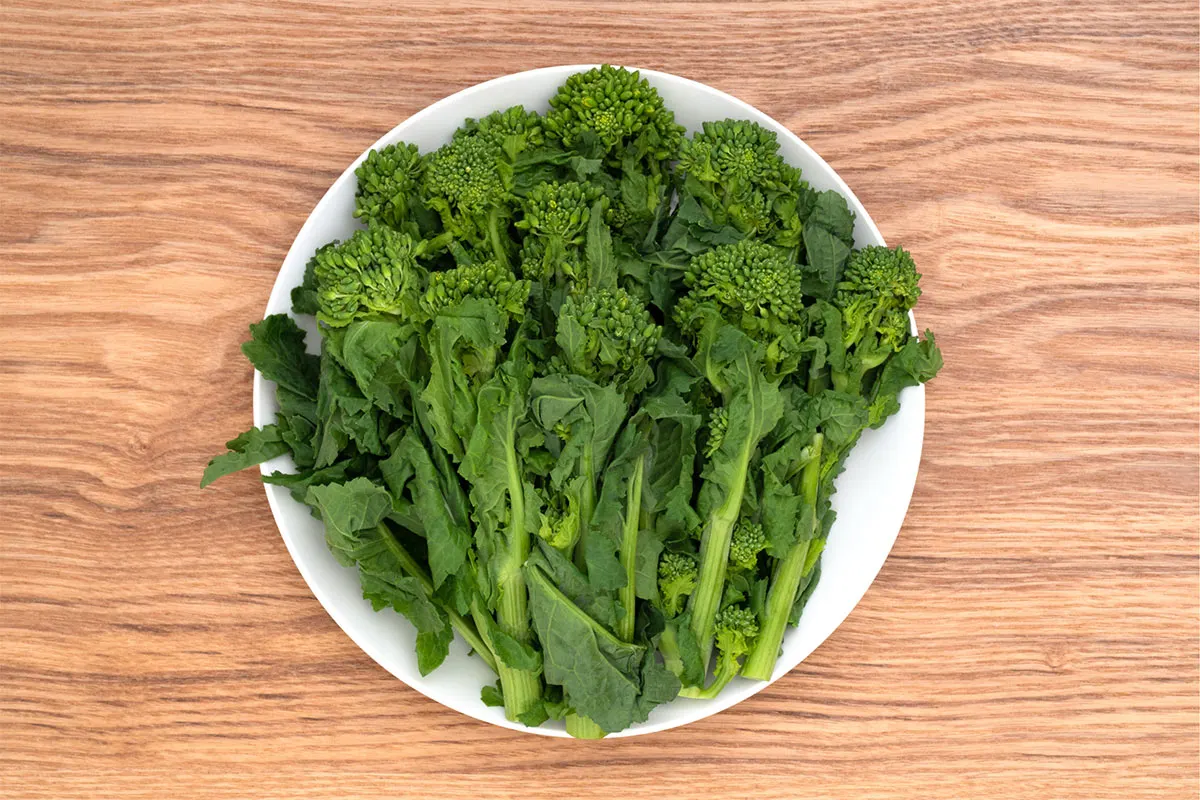
Nanohana is a common side dish in traditional Japanese meals. Young leaves and stems of the plant used to make canola oil are referred to as rapeseed or canola greens.
Nanohana has a bitter, nutty taste and is harvested in the early spring. The greens are blanched and used in many dishes, including salads, stir-fries, and dressings made with soy sauce.
The Brassica napus plant is the source of nanohana.
Nantes carrot
Sweet and crisp, Nantes carrots are a culinary staple in many European countries. Their mild sweetness complements savory dishes like soups, salads, and stews.
Daucus carota var. sativus is the scientific name for the Nantes carrot.
Napa cabbage
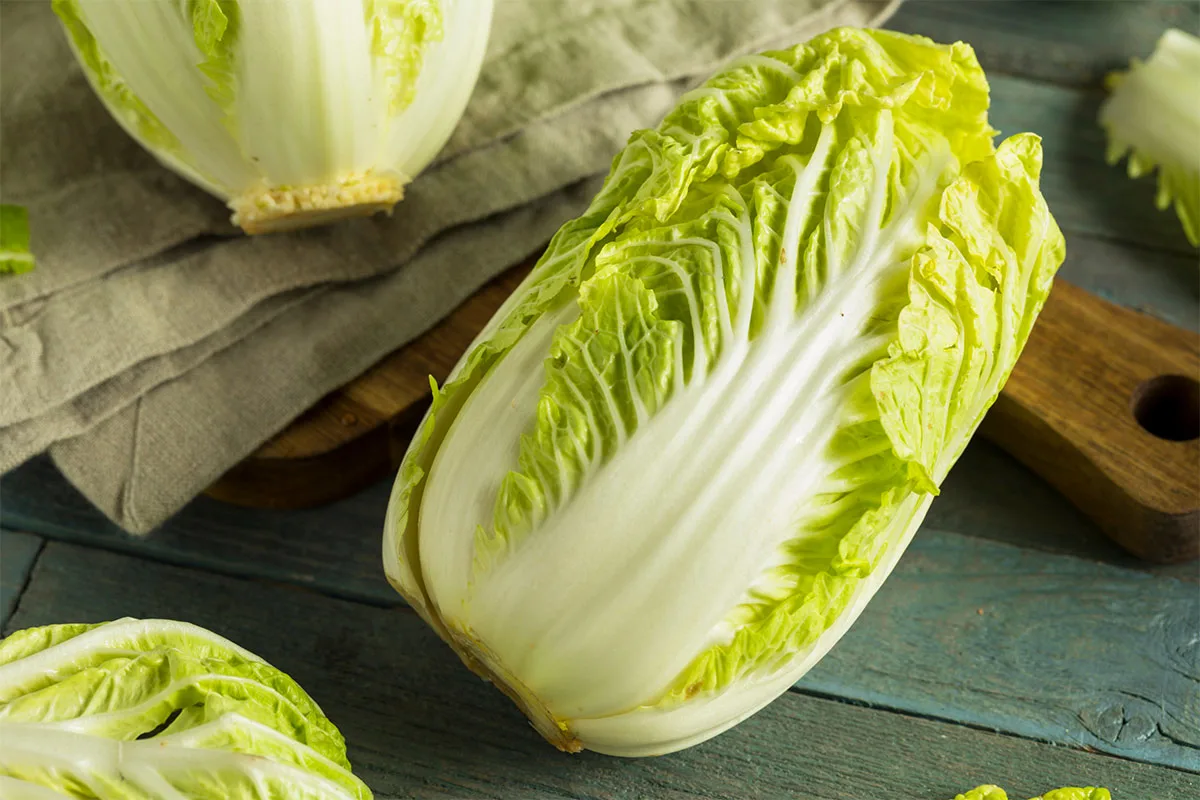
Napa cabbage is commonly used in the cuisine of eastern Asian countries. It’s more typical to refer to this vegetable as Chinese cabbage.
Napa cabbage has a mild, somewhat sweet, and crisp taste that works well in a variety of cooked and raw preparations. It’s an excellent source of vitamin C and dietary fiber.
Among scientists, this cabbage variety is known as Brassica rapa var. pekinensis.
Napini kale
The chilly weather months are ideal for growing napini kale. The bolting plant’s stems, leaves, and blooms are all referred to as napini.
Its dark green leaves are used in a variety of dishes due to its somewhat bitter, peppery flavor. Napini’s vitamin and mineral content may help lower inflammation and improve cardiovascular health.
Brassica oleracea var. acephala is the raw material for making napini.
Napoli tomatoes
Tomatoes grown in the Campania region of Italy in the town of San Marzano sul Sarno are known as San Marzano or Napoli tomatoes. Tomato sauce is best made using Napoli tomatoes because of their low acidity, meaty texture, and strong flavor.
The Solanum lycopersicum genus includes the Napoli tomato.
Nasturtium
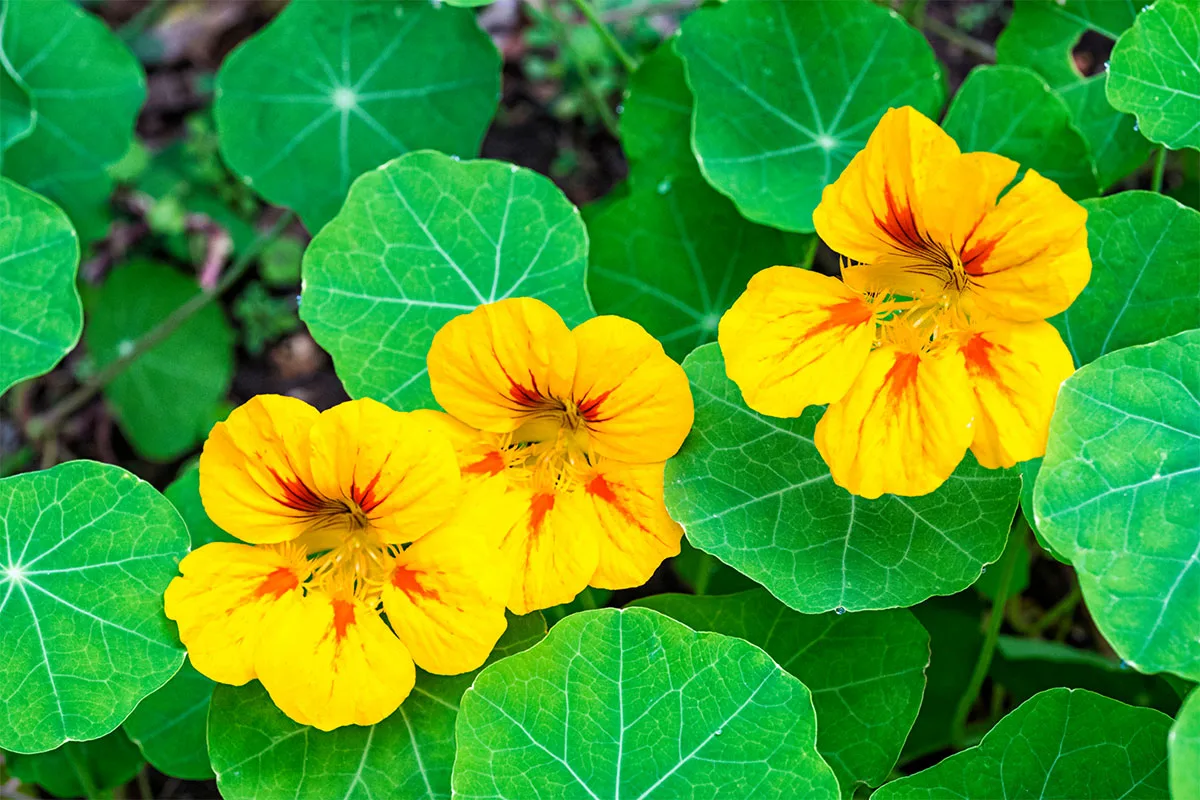
Nasturtium leaves and blossoms have a spicy and somewhat sweet taste. You may eat them raw as a source of vitamin C, add them to a salad, or use them as a decorative element.
The botanical name for nasturtium is Tropaeolum majus.
Navy beans
Small, white navy beans are a staple in American cooking. Soups, stews, and baked beans benefit greatly from their mild flavor and creamy texture.
Vegetarians and vegans can benefit from the protein, fiber, iron, and other nutrients found in navy beans.
The Phaseolus vulgaris species includes the Navy bean.
Neeps
Neeps is the Scottish word for turnip. These root vegetables have a little sweetness and earthy flavor, and they can be enjoyed either boiled or mashed.
Brassica rapa rapifera is the scientific name for a neep.
Nettles
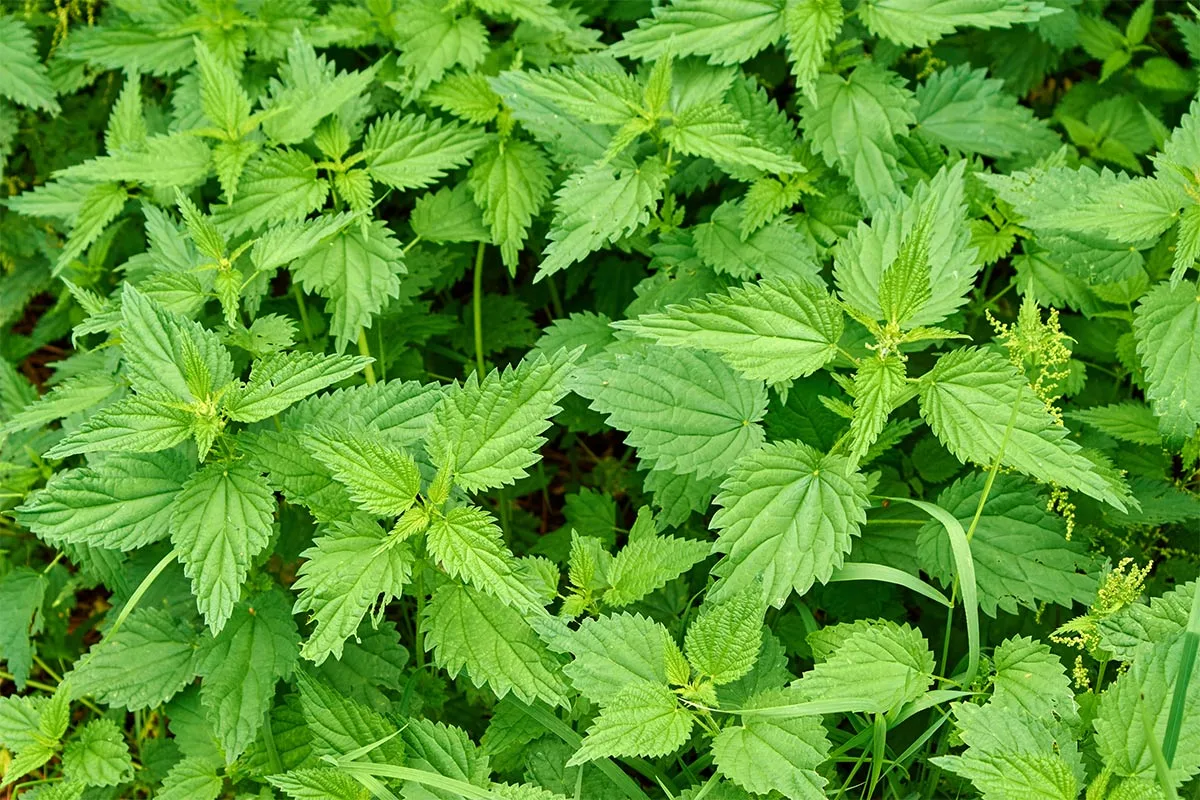
You can eat and benefit from these weeds. They taste like spinach and can be used in the same ways. Stinging nettles, which are rich in vitamins and minerals, are used to treat allergies and other conditions.
Urtica dioica is the scientific name for nettles.
New Zealand spinach
A kind of leafy green vegetable native to Australia and New Zealand. It has a similar flavor to spinach but thrives in warmer climates. Spinach grown in New Zealand is highly healthy and can be used in a variety of ways.
New Zealand spinach is known by its scientific name, Tetragonia tetragonioides.
New Zealand yam
New Zealand yam (Oxalis tuberosa) is grown all over the world, despite its South American provenance. You can find this sweet and nutty vegetable in many different salads and stir-fries.
Because it is higher in fiber and nutrients than potatoes, the New Zealand yam is a popular alternative to potatoes.
New potatoes
Early-planted and picked, new potatoes are also known as baby potatoes. You can boil, steam, or bake these little waxy potatoes and they’ll still be delicious.
New potatoes are Solanum tuberosum, to use their scientific name.
Nigella
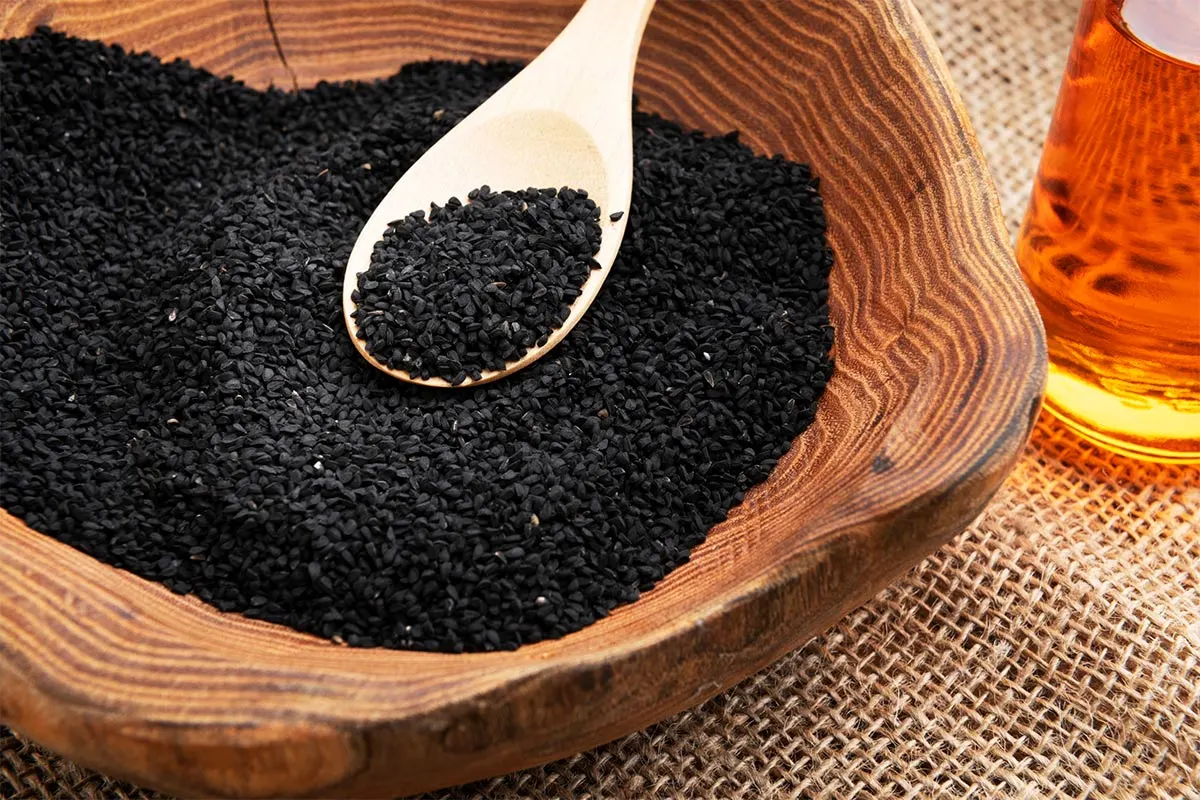
This tiny black seed, often called black onion seed or black cumin, is used in Middle Eastern and Indian cooking.
It’s a bitter, nutty spice that goes great with salads, breads, and curries. Antioxidants and other minerals found in nigella seeds have been linked to potential benefits for inflammation and gastrointestinal health.
Nigella sativa is the scientific name for the Nigella plant.
Nopales (cactus pads)
Prickly pear cactus pads, or nopales, are a staple in traditional Mexican cooking. These crunchy and sour veggies are great in tacos, salads, and stews.
Opuntia ficus-indica is a common source for nopales.
Nori
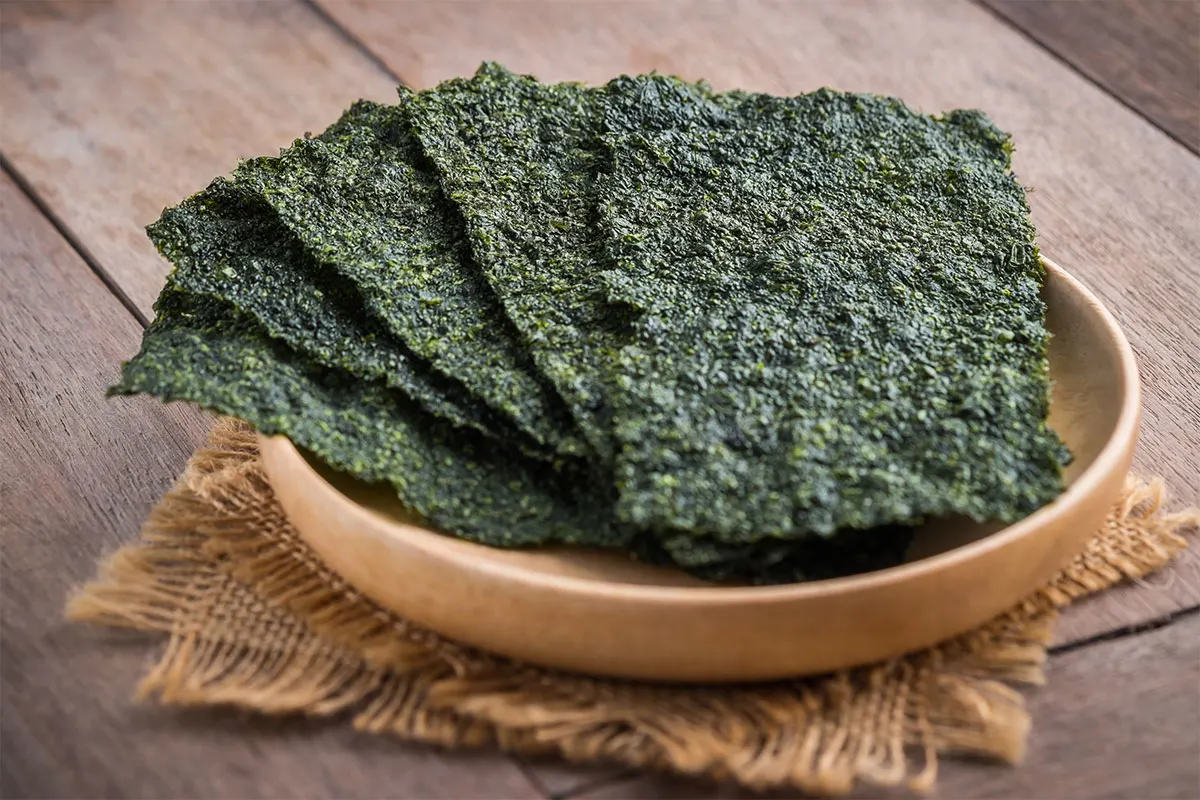
Nori, a kind of edible seaweed, is used in traditional Japanese sushi and rolls. It has a dark-green, paper-like texture and a salty, umami flavor.
It takes some getting used to, but nori’s salty, slightly sweet flavor works wonders in cooking and makes for a fantastic chip snack.
Porphyra yezoensis, Porphyra tenera, and Porphyra umbilicalis are only a few of the species used to make nori.
Numex chile peppers
Mild Numex chile peppers are commonly used in Tex-Mex and Mexican dishes. Because they are fruity and sweet with very little heat, they are perfect for people who can’t stand spicy foods.
Capsicum annuum is the scientific name for Numex chile peppers.
Fruits that start with N
Naartjie
Citrus naartjie, sometimes called tangerine or mandarin orange, originates in Southeast Asia but is currently grown commercially in South Africa. The little, simple-to-peel fruit goes well in salads and as a snack.
Naartjies have a similar flavor to oranges but a more aromatic and delicate aroma and anti-oxidant profile. Since they’re available in winter, they tend to be featured in baked goods and gift baskets.
Citrus reticulata is the scientific name for naartjie fruit.
Nagami kumquat

The oval fruit is orange-yellow in color and has a thin, edible skin that conceals a tangy, tasty core. Like a combination of lemon and orange, the taste is both sweet and acidic.
Pastries, jams, and drink garnishes all benefit from the addition of nagami kumquats. The fruit is a nutritious and delicious addition due to its high vitamin C and antioxidant content.
Fortunella margarita is the scientific name for Nagami kumquats.
Nam Dok Mai
The Nam Dok Mai mango is well-liked across Thailand and the rest of Southeast Asia. Nam Dok Mai, which translates to “flower water” in Thai, is the name given to this delicious fruit there.
The skin of a Nam Dok Mai mango is thin and yellow-green when unripe but turns a brilliant yellow when the fruit is at its peak ripeness.
This variety of mangoes is highly sought after due to its very sweet and tender, juicy flesh.
The scientific name for Nam Dok Mai mangoes is Mangifera indica.
Nance
Nance, a tropical fruit native to Central and South America, is known for its thin, tough skin and sweet, juicy content. Like a sour cherry or cranberry, it has a sweet, tangy, somewhat acidic flavor.
Nance fruit has several uses, including in cooking and traditional medicine. Smoothies, drinks, jams and jellies all benefit from its inclusion.
Byrsonima crassifolia is the scientific name for this fruit.
Nannyberry
Nannyberry, or Viburnum lentago, is a tiny deciduous tree or shrub that is endemic to the eastern and central parts of the United States and Canada.
In the spring, Nannyberry plants produce clusters of small, white flowers, and in the late summer or early fall, the shrub bears clusters of dark blue to black, tasty berries.
The sweet, delicious fruit is used in a variety of jams, jellies, and baked goods. The leaves of a nannyberry tree are edible and can be used instead of other herbs and spices.
Naranjilla
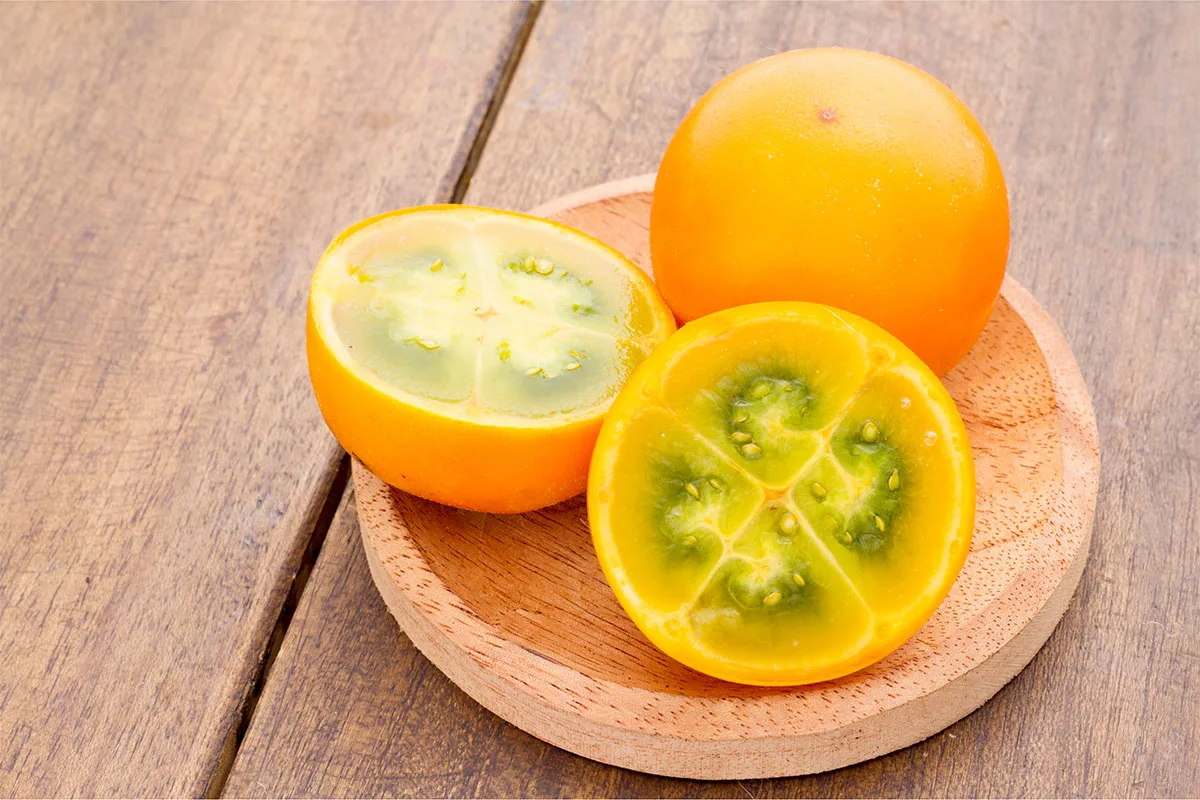
The Andes in South America are the best places to cultivate the tropical fruit naranjilla. When ripe, it’s small, green, and spherical, with a consistency similar to a tomato.
The naranjilla fruit is used in drinks, juices, and desserts due to its pineapple and lime-like flavor. The tea made from the plant’s leaves is both delicious and visually appealing.
The scientific name for naranjilla is Solanum quitoense.
Naseberry
Throughout southern Mexico, Central America, and the Caribbean, you can find trees bearing sapodilla, also called naseberry.
The rich, caramel-flavored flesh of the black, fuzzy fruit is wonderful. It’s delicious both on its own and when cooked into sweet preserves.
The latex sap from the tree can also be used to make tasty chewing gum.
The botanical name for the naseberry tree is Manilkara zapota.
Nashi pear

The nashi pear, originally from East Asia, is now cultivated all over the world. The fruit has the texture and firmness of an apple yet the flavor and aroma of a pear.
The subtle russeting on the skin of the yellow or green flesh indicates its wonderful sweetness. Nashi pears are versatile and can be eaten both fresh in salads and cooked in a number of different ways.
Pyrus pyrifolia is the scientific name for Nashi pears.
Natal plum
The Carissa macrocarpa, or Natal plum, is a shrub native to southern Africa. It produces round, crimson to purple-black fruits with a sweet-sour flavor.
The vitamin C-rich fruit is used in a variety of preserves.
The shrub is prized for its dense leaves and fragrant, white star-shaped flowers. The natal plum can withstand dry conditions and thrive in a wide variety of soils.
Navel orange
Delicious oranges called navels have a little, undeveloped secondary fruit at the blossom end, where a navel would be. The naval orange was first planted in Brazil, but it is now also cultivated in the United States, Spain, and Israel.
It has a brilliant orange, silky skin that peels easily and delicious, sugary flesh with no seeds.
Citrus sinensis, a cross between the sweet orange and the pomelo, is the scientific name for this citrus fruit.
Nectaplum
Hybrids between plums and nectarines, often known as nectaplums. They first appeared in the early 20th century, and today they are produced in several places around the world.
The flesh of this fruit is solid and luscious, and its skin is a velvety shade of red or purple. There are nectarine plums that don’t really taste like plums at all.
Most people consume the fruit either fresh or preserved in various desserts like jams and jellies.
Nectarine
Nectarines and peaches are both stone fruits that have a common ancestor. Nectarines are fruits that look like peaches but have softer, yellow or red skin.
Originating in China some two thousand years ago, nectarines are now cultivated all over the world. Their juicy, sugary meat has an understated peach-plum flavor.
You can eat nectarines raw, dry, or cooked in sweets like pies and jams. In addition to other minerals, they are rich in vitamin C and fiber.
Prunus persica var. nucipersica is the botanical name of the nectarine tree.
Neem

The scientific name for the neem trees native to India and Southeast Asia is Azadirachta indica.
The “wonder tree” has been studied extensively for its medicinal and environmental benefits. In Ayurveda, the tree’s leaves, bark, seeds, and oil are used to alleviate symptoms including itching and irritation.
The delicious pulp of a neem fruit is used to make juice, but the fruit can also be eaten raw or dried.
Nepali hog plum
The lapsi, or Nepali hog plum is an acidic and sour fruit native to South Asia. The tiny, round fruit has a tough shell that needs to be broken open in order to reveal the juicy interior.
South Asian chutneys, pickles, and sauces, as well as snacks and desserts, often use Nepali hog plum. Vitamins and minerals in the fruit may aid in digestion and boost immunity.
The bark and leaves of the Nepali hog plum tree are used in both traditional medicine and food preparation.
Spondias pinnata is the scientific name for the tree.
Nespera

Nespera fruit, sometimes called loquat, is a delectable, little Chinese fruit grown all over the world. This fuzzy, orange-colored fruit is deliciously tart, sweet, and juicy.
Nespera tree leaves have been used for centuries in traditional medicine to treat a variety of ailments, including coughs, sore throats, and skin irritations.
Eriobotrya japonica is the scientific name for the Nespera fruit.
New Zealand cranberry
The cranberry native to New Zealand is called a karamu, and it can also be found in some parts of Australia. It looks like a cranberry, but it’s actually an elderberry.
The tart red fruit is used in condiments such as jams, jellies, and sauces. Traditional Maori medicine also makes use of this plant.
The scientific name for the New Zealand cranberry is Aristotelia serrata.
Newtown Pippin apple
The Newtown Pippin apple is an American staple with a long and storied past. Its distinctive flavor and long shelf life helped propel it to fame after its discovery in Queens, New York in the 18th century.
After falling out of popularity in the early 20th century, this medium-sized, russeted greenish-yellow fruit has recently been rediscovered by apple aficionados.
The crisp, juicy, somewhat acidic flesh of the apple tastes rich, peppery, or even like wine. It works well in both baked goods and cider.
The scientific name for the Newtown Pippin apple is Malus domestica.
Niitaka pear
Niitaka pears from Japan are enormous, juicy, and sweet. They are somewhat tart and sweet, with tender, aromatic flesh.
These pears are used in savory and sweet preparations alike. This tasty fruit is available from early summer to late fall.
Nijisseiki is the Japanese name for Niitaka pears, while its scientific name is Pyrus pyrifolia.
Nikita’s Gift persimmon
Sweet and delicious, persimmons from Nikita’s Gift are a treat. In the 1970s, it was created in New Zealand, and now it’s famous all over the world.
The round, flat, and reddish-orange fruit is of average size. It can be consumed either raw or cooked.
The Japanese and the American persimmon trees were crossed to create this hybrid cultivar. Diospyros kaki ‘Nikita’s Gift’ is the scientific name for this fruit.
Noiret grape
The Noiret red wine grape was developed in the early 2000s at Cornell University’s New York State Agricultural Experiment Station. It’s a cross between the NY65 and Steuben grape varieties.
The Noiret grape, with its deep red color, robust flavor, and spicy overtones, is used to make full-bodied red wines.
The flavor and aroma of Noiret wines are enhanced by aging them in oak barrels for many months to years.
Vitis vinifera ‘Noiret’ is the official name for this hybrid grape.
Nonda plum
Nonda plum (Davidsonia jerseyana) is a small to medium-sized rainforest tree that can only be found in the northern parts of New South Wales and Queensland, Australia.
A dark crimson to purple drupe, about the size of a cherry, is produced by the nonda plum tree. It’s tangy and sweet, and it’s packed with antioxidants, vitamin C, potassium, and zinc.
Noni fruit

The little evergreen tree native to Southeast Asia, Australia, and the Pacific Islands is home to the tropical noni fruit, often known as Indian mulberry.
The aroma and flavor of the fruit are notoriously pungent and unpleasant, but its many health benefits have made it a popular dietary supplement.
The scientific name for the noni fruit is Morinda citrifolia, and it belongs to the family Rubiaceae.
Nonpareil apple
Nonpareil apples cultivated in the United States are sweet and juicy. Their greenish-yellow skin, red blush, and white flesh are distinctive features.
Nonpareil apples shine in their natural state or after being prepared into baked goods, sauces, and preserves. The apple’s distinct flavor and scent complement many varieties of cheese.
The Nonpareil apple tree, also known as Malus domestic, is a member of the Malus genus of plants.
North Star cherry
The North Star cherry is a kind of tart cherry (Prunus cerasus) that was created in Minnesota. The bright red, tasty cherries from this small to medium-sized deciduous tree are perfect for making pies, jams, and preserves.
The North Star cherry is less sweet and more tart than other sorts of cherries. The fruit is most often turned into cherry juice or cherry wine.
Northern Spy apple
In the early 1800s, New York was the birthplace of the Northern Spy apple. The skin on one side of its greenish-yellow body is usually reddened.
The flesh of Northern Spy apples is crisp, juicy, acidic, and just somewhat sweet. Since it retains its shape throughout baking and cooking, this apple is very versatile.
Malus pumila ‘Northern Spy’ is the scientific name for the Northern Spy apple cultivar.
Nungu fruit
The Nungu fruit is a tropical fruit native to South and Southeast Asia. It is also known as the Ice Apple or Taal fruit. It is harvested from the Borassus flabellifer palm in Palmyra.
Nungu fruit can be round or elongated like a little apple or peach. When the fruit’s thin, hard shell is broken, the fruit’s jelly-like inside is revealed.
The clear, white flesh of this fruit is pleasantly sweet and refreshing. It is commonly eaten fresh throughout the summer months.
Nutmeg

Nutmeg comes from the Myristica fragrans tree, which is native to several of the islands in Southeast Asia.
The typical nutmeg is about the size of a plum and is sold both whole and ground. Warm, sweet, and somewhat spicy, nutmeg enhances the flavor of baked goods, pies, custards, meat dishes, and soups.
It’s also a key ingredient in perfumes, alcoholic beverages, and alternative medicines.
Keep in mind that consuming too much nutmeg fruit might lead to hallucinations and other issues with your health.
Nuts
To put it simply, nuts are “fruit with a hard, inedible outer shell containing the seed.” The seed is protected by a tough, woody hull.
Some examples of nuts are almonds, walnuts, pecans, pistachios, and hazelnuts. They’re packed with nutrients including protein, beneficial fats, fiber, vitamins, and minerals.
“N” meals offer a variety of flavors and textures to gratify any pallet. Everyone can appreciate the sweet, juicy nectarine or the robust, healthy navy bean.

76 Exciting Foods That Start With N (I bet you like #13)
Ingredients
Dishes and snacks that start with N
- Naan bread
- Nachos
- Nargesi
- Nasi goreng
- Natto
- Noodles
- Nuggets
Processed foods that start with N
- Non-dairy creamer
- Noodle soup mix
- Nut butter
- Nutri-grain bars
- Nutritional yeast
- Nutella
Sweets beginning with N
- Nankhatai
- Napoleon cake
- Neapolitan ice cream
- Nesselrode pie
- New York Cheesecake
- Nougat
- Nougatine
- Nut brittle
Drinks beginning with N
- Naranjada
- Nectar juice
- Negroni
- Negus
- Nettle tea
- Non-alcoholic beer
- Nut milk
- Nutmeg milk
Vegetables that start with N
- Naga Jolokia pepper
- Naga Morich pepper
- Nagaimo yam
- Nanohana
- Nantes carrot
- Napa cabbage
- Napini kale
- Napoli tomatoes
- Nasturtium
- Navy beans
- Neeps
- Nettles
- New Zealand spinach
- New Zealand yam
- New potatoes
- Nigella
- Nopales
- Nori
- Numex chile peppers
Fruits that start with N
- Naartjie
- Nagami kumquat
- Nam Dok Mai
- Nance
- Nannyberry
- Naranjilla
- Naseberry
- Nashi pear
- Natal plum
- Navel orange
- Nectaplum
- Nectarine
- Neem
- Nepali hog plum
- Nespera fruit
- New Zealand cranberry
- Newtown Pippin apple
- Niitaka pear
- Nikita’s Gift persimmon
- Noiret grape
- Nonda plum
- Noni fruit
- Nonpareil apple
- North Star cherry
- Northern Spy apple
- Nungu fruit
- Nutmeg
- Nuts
Why not try “N” items in your next meal? You may find your new favorite food!
Let’s not forget that vegetables that start with N and nourishing N-fruits have separate posts where you can find more info.
I also have lists for other foods, like foods that begin with U, and vegetables that start with V!
